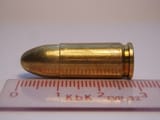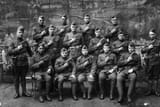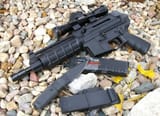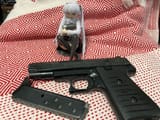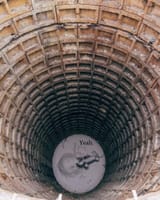Anonymous
8/23/2025, 9:27:01 PM
No.64161453
>>64161461
>>64161512
>>64161639
>>64161750
>>64162111
>>64162153
>>64162280
>>64162300
>>64164252
>>64164324
>>64164458
>>64164642
>>64164673
>>64165175
>>64166496
>>64168843
>>64169624
>>64170418
>>64170772
How did European Mediocrity become the standard for Americans?
>In compact pistols, .380 Auto makes way more sense, and it's also naturally subsonic for good suppression.
>In subcompact and pocket pistols, we have the .32 Auto, with the same advantages.
>In full size guns, .45 Auto makes way more sense, and again, it is naturally subsonic for good suppression. The relatively low velocity and pressure ironically makes it far more enjoyable to shoot than 9x19.
>9x19 generally has too high of an energy to sectional density ratio for shooting humans, meaning you're almost guaranteed to shoot entirely through someone and waste energy, which is why hollow points exist and are most common in 9x19, but then why not just shoot .45 Auto?
>Unlike essentially every other common handgun cartridge it has a taper, which should theoretically increase feeding reliability, but limits magazine reliability (pistols have straight magazines). An example of this problem manifests itself in the Springfield Kuna, originally designed for the .40 S&W (a straight wall cartridge) which had 9mm shoehorned into it and now has magazine issues.
>Magazine capacity is not a practical advantage: the average self-defense shooting is over with only a single round fired.
>It is unsuitable for hunting unlike the 10mm Auto.
The only, and I mean ONLY place one can claim 9mm makes sense is in IPSC-style carboard run-and-gun competition, where you want a huge magazine of 15+ rounds to avoid time lost to reloads, which ironically is quite European because they generally can't carry for self defense.
So why should an American, with nearly limitless options of handguns, choose this mediocre chambering?
>In subcompact and pocket pistols, we have the .32 Auto, with the same advantages.
>In full size guns, .45 Auto makes way more sense, and again, it is naturally subsonic for good suppression. The relatively low velocity and pressure ironically makes it far more enjoyable to shoot than 9x19.
>9x19 generally has too high of an energy to sectional density ratio for shooting humans, meaning you're almost guaranteed to shoot entirely through someone and waste energy, which is why hollow points exist and are most common in 9x19, but then why not just shoot .45 Auto?
>Unlike essentially every other common handgun cartridge it has a taper, which should theoretically increase feeding reliability, but limits magazine reliability (pistols have straight magazines). An example of this problem manifests itself in the Springfield Kuna, originally designed for the .40 S&W (a straight wall cartridge) which had 9mm shoehorned into it and now has magazine issues.
>Magazine capacity is not a practical advantage: the average self-defense shooting is over with only a single round fired.
>It is unsuitable for hunting unlike the 10mm Auto.
The only, and I mean ONLY place one can claim 9mm makes sense is in IPSC-style carboard run-and-gun competition, where you want a huge magazine of 15+ rounds to avoid time lost to reloads, which ironically is quite European because they generally can't carry for self defense.
So why should an American, with nearly limitless options of handguns, choose this mediocre chambering?
